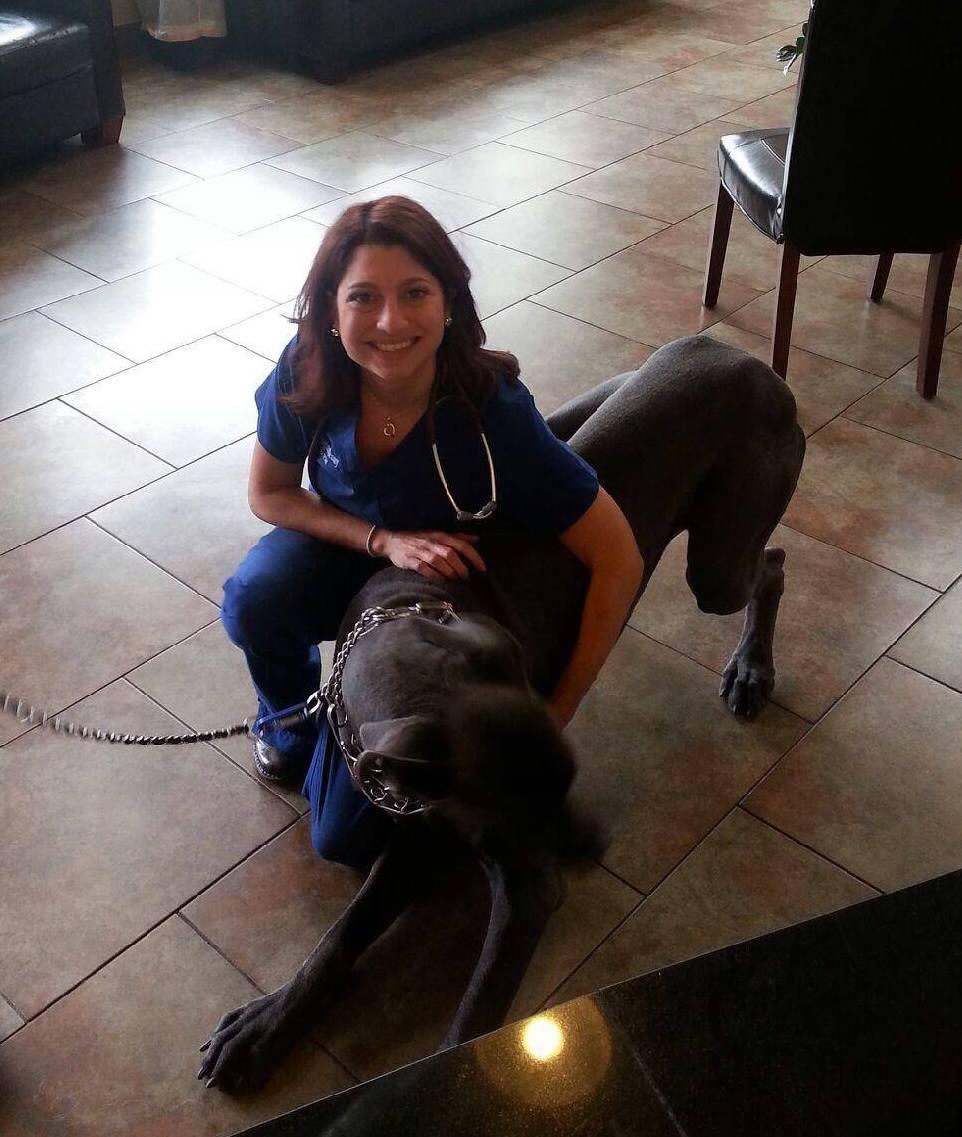Understanding Cat Behavior: Insights from Your Veterinarian
Cats are wonderful companions, but sometimes, their behavior can be downright mystifying. While some of your feline friend’s eccentric behaviors may be cute, others can quickly become problematic. If you have turned to the internet seeking answers about your cat’s behavior problems, we suggest scheduling an appointment with the veterinarian as soon as possible. At GeniusVets, we believe veterinarians are the best sources of information regarding your cat’s health and that pet care information shouldn’t come from Dr. Google. That’s why we asked vets around the country some common questions about cat behavior and compiled their responses to give you accurate information you can rely on.
Understanding and Modifying Troubling Cat Behavior
While the information below comes directly from renowned veterinarians throughout the U.S., we encourage you to seek advice from your own vet. If you don’t have one, you can find a trusted veterinarian in your area using the GeniusVets Directory.
What is the most important thing to know about cat behavior?
There are several crucial things to know about cat behavior. However, the most important consideration is that while every cat is different, they are all creatures of habit. As your cat’s owner, you know them better than anyone else and play a pivotal role in identifying problems. Pay close attention to their behavior because any changes could indicate an underlying issue. Cats are extremely good at hiding illnesses, so it’s vital to know what their “normal” looks like and seek veterinary care when something doesn’t seem quite right.
Is it possible to fix behavior issues in a cat?
Yes, it is possible to fix behavior issues — but only with commitment from their owner. Underlying medical conditions cause many behavior changes, so getting to the root of the problem is crucial.
Some of the most common behavior issues caused by underlying medical problems include:
- Inappropriate urination
- Going outside the litter box
- Eliminating in inappropriate locations throughout the home
- Aggression
In these situations, you should consider taking your cat to the veterinarian to determine if the problem has an underlying medical cause. When you detect a problem, but the veterinarian cannot find a root medical cause, you must take steps to correct the behavior by cleaning the litter box more frequently, having your cat spayed or neutered, adding extra litter boxes, etc.
What are some signs and symptoms of cat behavior problems?
Anything that isn’t normal for your cat could be a sign of a behavior problem. There are a few specific things to watch out for, though.
Common signs of cat behavior problems include:
- Inappropriate urination or defecation
- Any changes in litter box habits
- Sudden, unexplained aggression
- Sleeping more than usual
- Appetite changes
- Restlessness or anxiousness
- Changes in vocalization
- Unusual scratching behavior
Litter box issues are the most common cat behavior problem. But as a loving pet parent, it’s up to you to keep an eye on your feline friend’s behavior and take note of any changes. You know your cat best, and any deviation from their “normal” should be watched and potentially evaluated by your veterinarian. While your cat could be telling you to clean the litter box more frequently when they eliminate outside the litter box, there could be a physical cause for this behavior (such as a bladder infection).
Cat Behavior Training Products
Training your cat may seem tricky, but with the right tools and consistent positive reinforcement, it's absolutely possible. Whether you're teaching behaviors or correcting unwanted ones, these training aids support a healthier relationship between you and your cat. As always, consult your veterinarian if you're unsure about behavioral changes or which tools may be most effective.
Product Overviews
- Cat School Clicker Training: A beginner-friendly clicker training kit that encourages positive reinforcement and engagement for teaching commands and tricks.
- Book - Understanding Cat Behavior: This educational guide helps pet parents interpret feline communication and provides tips for training and behavior support.
- Cat Toilet Training Kit: A step-by-step toilet training system designed to transition your cat from litter box to toilet use.
- Cat Training Deterrent Spray: A safe and effective spray to discourage unwanted behaviors like scratching or marking specific areas.
- Cat Anti-Scratching Tape: Transparent sticky tape for furniture that discourages scratching and protects surfaces.
- Cat Pee Deterrent Spray: Helps reduce inappropriate urination by deterring cats from returning to marked areas.
Comparing Different Cat Training Product Types
| Product | Type | Highlights |
|---|---|---|
| Cat School Clicker Training | Clicker Kit | Encourages learning through sound-based reinforcement; includes a clicker and guidance materials. |
| Understanding Cat Behavior Book | Book | Explains feline behavior and provides techniques to support communication and behavior management. |
| Cat Toilet Training Kit | Training System | Step-by-step litter-to-toilet training system for patient and persistent cat owners. |
| Cat Training Deterrent Spray | Spray | Discourages scratching or inappropriate marking without harsh chemicals. |
| Cat Anti-Scratching Tape | Sticky Tape | Furniture-safe adhesive strips that deter scratching by creating unpleasant texture. |
| Cat Pee Deterrent Spray | Spray | Discourages urination in unwanted areas and helps break marking habits. |
Top Pick
For pet parents looking to actively engage with their cats and build new skills, the Cat School Clicker Training Kit is a great place to start. It makes training interactive and rewarding—both for your cat and for you.
When should I bring my cat in to see a veterinarian to discuss behavior?
Veterinarians recommend scheduling an appointment if you notice a change in your cat’s behavior that lasts for more than one day. This is especially critical for issues with eating, inappropriate elimination, or an inability to pass urine. The faster you seek treatment for your cat, the better the prognosis in most instances. Some problems escalate and become severe quickly, so getting your cat to the vet as soon as possible is the safest bet.
How would a veterinarian diagnose behavior problems in my cat?
Veterinarians diagnose behavior problems in cats based on physical exams and history. If everything seems normal during the exam and there are no obvious medical issues, vets usually ask if there have been any recent changes in your household.
Your cat’s vet might ask the following questions about changes to your cat’s environment:
- Are there any new animals in the house?
- Are there any new people in the house?
- Have you recently relocated the litter box or changed litter brands?
The answers to these questions can help your vet better understand what’s going on with your furry friend and determine if the behavioral problem has a medical cause. From there, the veterinarian may recommend additional diagnostic tests, including blood work, urinalysis, and/or x-rays.
What are some possible health concerns that can arise from cat behavior problems?
Behavior problems and underlying medical issues cause stress, which can lead to stress cystitis, a condition that causes bladder inflammation. This is a very common problem in cats and a leading cause of inappropriate urination. Cats who are stressed or in pain may also attack their owners or other household members.
Serious problems can arise when stress causes a cat to stop eating, too. And even more so than dogs, cats cannot go an extended period of time without food. If they do, they could very well develop liver problems.
Behavior problems and stress decrease your cat’s quality of life and impact their overall wellbeing.
Why is early detection and diagnosis so crucial for cats with behavior issues?
As mentioned above, behavior issues have a negative impact on a cat’s health and wellbeing. And because cats are so good at hiding things, there could be serious underlying problems by the time they start showing symptoms. That is why it’s so critical to seek veterinary care as soon as you notice anything unusual about your cat’s behavior. The sooner you schedule an appointment with your veterinarian, the sooner your cat will be on the road to recovery.
Cat Behavior Calming Products
Even when an underlying medical issue does not cause them, behavioral problems become more challenging to overcome with time. Early detection and diagnosis are the best ways to avoid facing a situation where you need to rehome your cat due to aggression issues or poor litter box habits.
When it comes to calming a stressed or anxious cat, there are a variety of products available to support behavioral wellness—ranging from pheromone diffusers to natural calming chews. It's always a good idea to speak with your veterinarian before introducing a new product into your cat’s routine.
Product Overviews
- Cat Calming Pheromone Diffuser: A home diffuser that helps reduce anxiety-related behaviors like spraying and hiding using synthetic pheromones.
- Calming Cat Pheromone Collar: A long-lasting wearable collar that steadily releases soothing pheromones for stress reduction.
- Calming Cat Chews: Supplement chews made with natural ingredients to help relax your cat without sedation.
- VetriScience Composure - Calming Chews: Veterinarian-formulated chews for fast-acting relief during stressful situations.
- VetriScience Composure, Calming Formula for Cats: Designed for daily use to support balanced behavior and promote calmness.
- Nutramax Solliquin Calming Supplement: Combines L-theanine and Magnolia extract to manage everyday stress in cats.
- Virbac Zenifel Gel Diffuser: A pheromone-based gel diffuser for long-term stress management in multi-cat homes or high-anxiety cats.
- Virbac Anxitane Tablets: Palatable tablets containing L-theanine to promote calm behavior without drowsiness.
Comparison Table
| Product | Form | Highlights |
|---|---|---|
| Cat Calming Pheromone Diffuser | Diffuser | Helps reduce stress-related behaviors like spraying and hiding; ideal for home use. |
| Calming Cat Pheromone Collar | Collar | Long-lasting calming pheromone collar; effective during travel or stressful events. |
| Calming Cat Chews | Chews | Daily chewable supplement with natural calming ingredients like L-theanine and chamomile. |
| VetriScience Composure - Calming Chews | Chews | Veterinarian-formulated calming chews with fast-acting ingredients; great for short-term anxiety. |
| VetriScience Composure, Calming Formula | Chews | Supports balanced behavior and relaxation without sedation; perfect for routine use. |
| Nutramax Solliquin Calming Supplement | Chews | Helps manage normal stress and anxiety using natural ingredients including L-theanine and Magnolia. |
| Virbac Zenifel Gel Diffuser | Diffuser | Pheromone-based stress relief for cats showing fear, anxiety, or marking behaviors. |
| Virbac Anxitane Tablets | Tablets | Supports relaxation in cats without sedation; L-theanine based, palatable tablets. |
Top Pick
For a well-rounded solution that can be used regularly and during acute stress, we recommend VetriScience Composure chews. They're fast-acting, well-tolerated, and ideal for both daily support and occasional stressful events.
Is there anything else to know about cats with behavior issues?
Because they are creatures of habit, cats see changes in their environment as stressful. Even if you are taking them from a bad environment to a better one, they will likely at least initially experience stress, which could lead to behavior problems.
As your cat’s owner, you are part of their environment, too. If your routine changes, you have work done around your home, you adopt a new pet, or you make any other changes that affect your cat’s environment, your cat’s behavior may change. Be mindful of these changes, and do what you can to minimize stressful situations. When problems arise and you cannot solve them on your own, contact your veterinarian for assistance.
If you still have questions about cat behavior problems, the Cornell Feline Health Center is an excellent resource for trusted information. We also encourage you to schedule an appointment with your cat’s veterinarian. No vet? No problem! We’re here to help you find a trusted local veterinarian.
The Following Veterinarians
Contributed To The Cat Behavior Information On This Page


The Ultimate Guide
to Cat Care
This free guide is an indispensable manual for cat ownership. Filled with veterinary advice and recommendations on every important topic at each stage of your cat's life, this is all the stuff that responsible cat owners need to know. That is why we are making it free!




